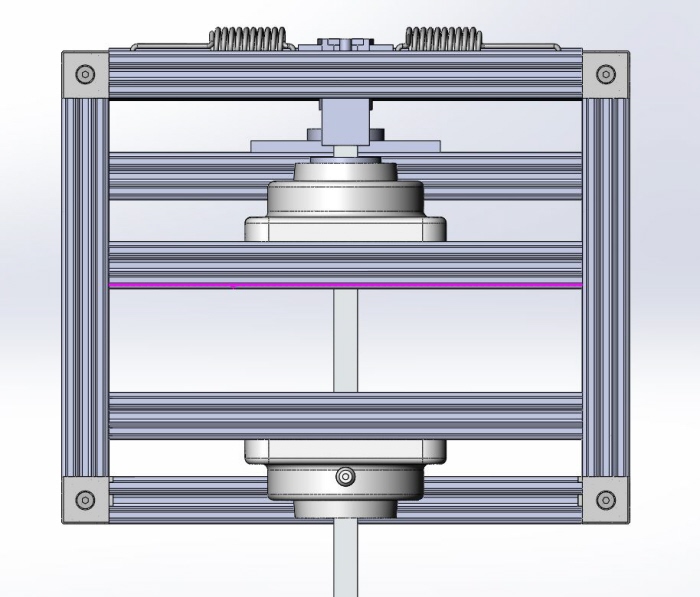
This view points in the direction of flow in the wind tunnel. Two pillow blocks and the spar are clearly visible.

This is a profile view of the entire mechanism. The outer cage is made of an extruded aluminum profile. In this case, it is a product called 80-20.


This image shows the v-block plate indexed to the right. You can clearly see larger gap between the pin, shown as a circle, and the v-block plate in relation to the image above. The end user was taken into account when designing the v-block plate assembly. The v-block plate and the mount below it have holes in them. These holes patterns have different spacing between them. It works just like a Vernier Scale to allow more intermediate positions. This entire mechanism will be mounted onto the ceiling of the wind tunnel. The wind tunnel is approximately 8 feet high. If the shoulder bolts that locate these parts were mounted from the top, they would be difficult to reach. To allow the v-block plate to be moved quickly and repeatedly, they are mounted from the bottom to allow quicker access. Finally, visual indicators will be used to to allow the user to know exactly how much free play there is at any given time.

This image depicts the actual 80-20 cage the components will be mounted to.
gLike